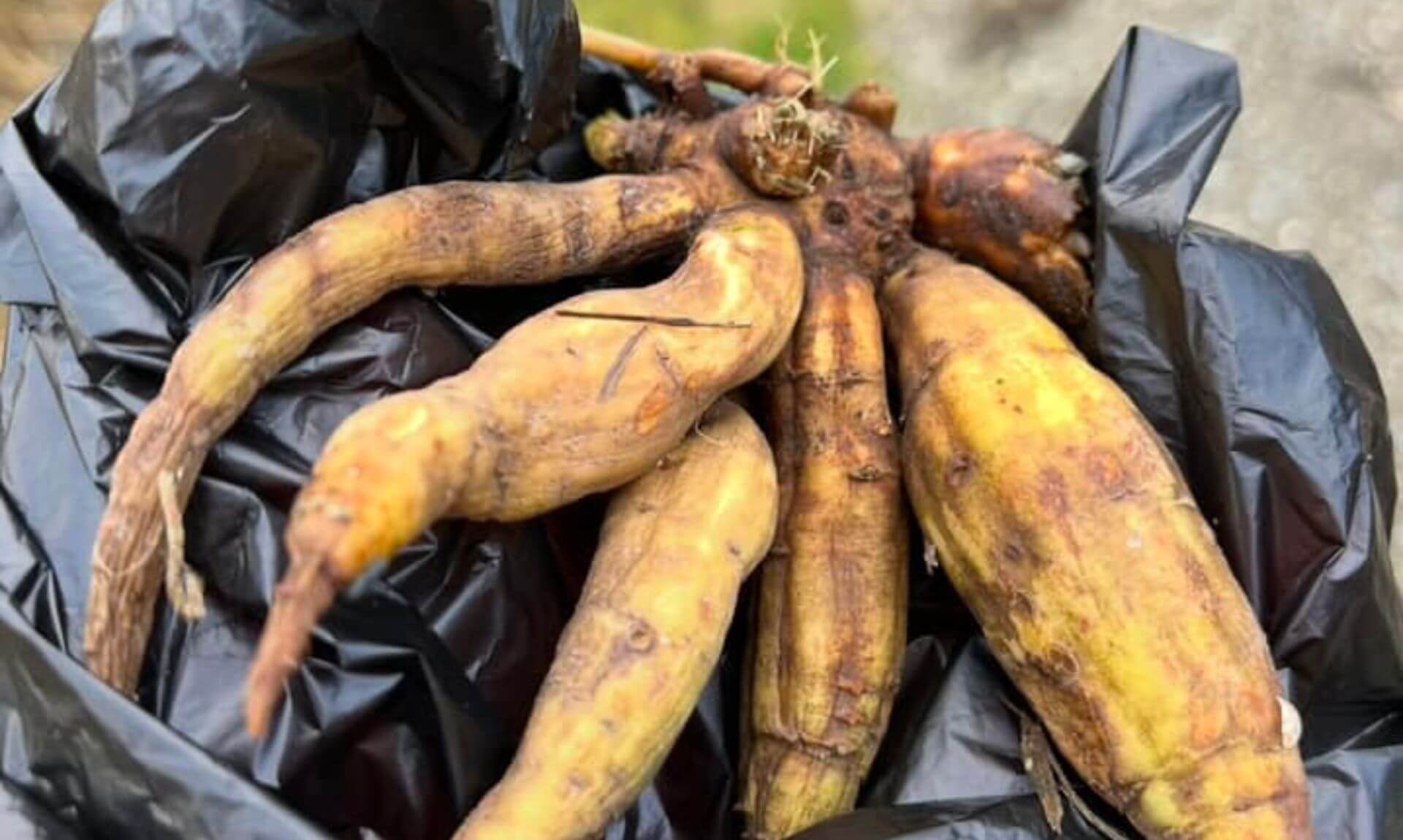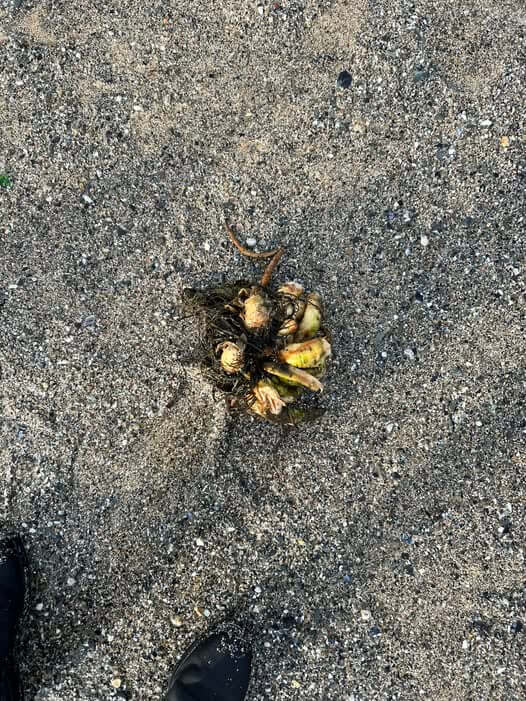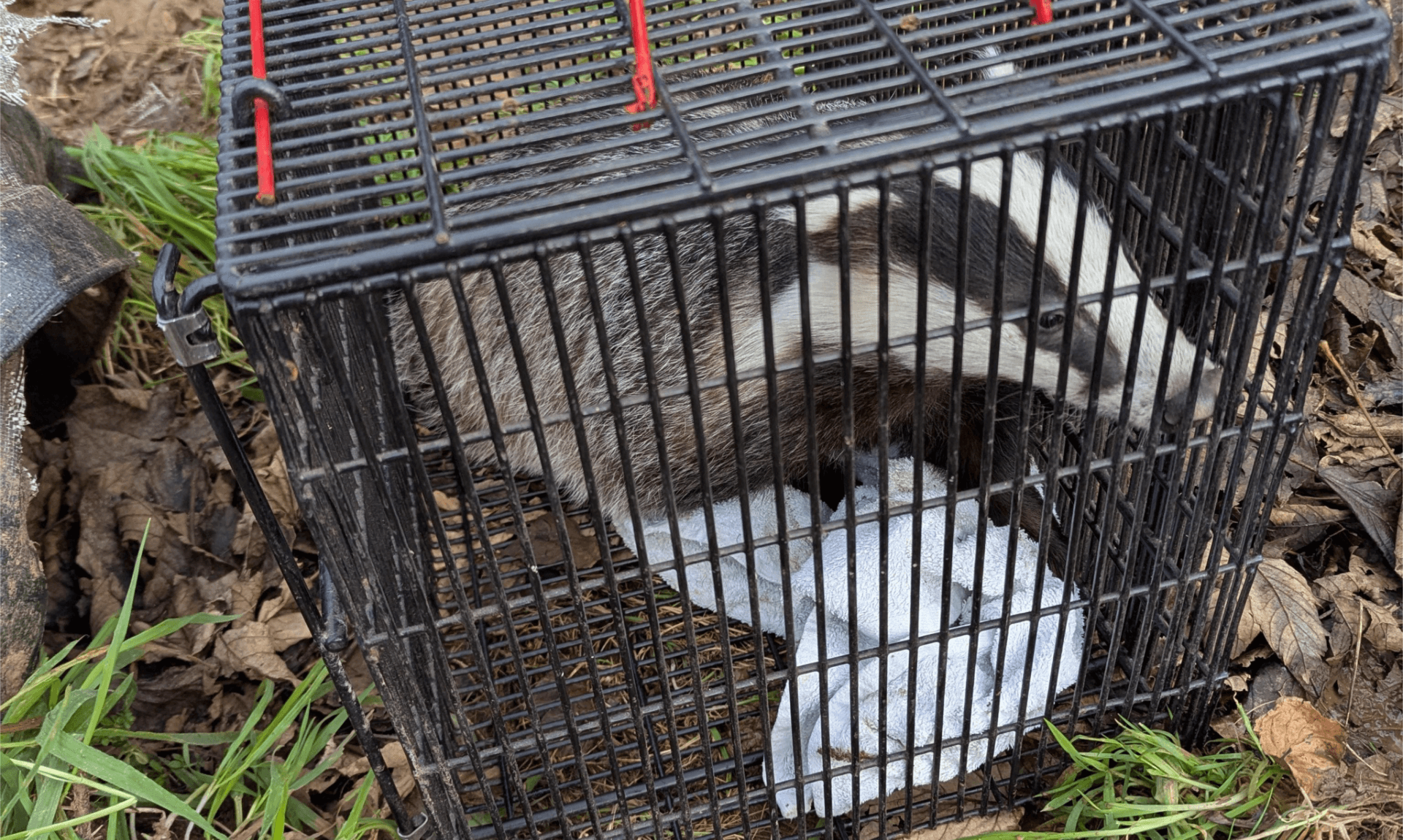Dead Man’s Fingers Washed Up on Newquay Beach – Why It’s So Dangerous
Photo: Found this down The Gannel in December. Hemlock Water Dropwort – Photo credit: Gwynnie Griffiths
A warning to dog walkers and beachgoers after a highly toxic plant was spotted on Great Western Beach, Newquay.
Highly Toxic Plant Found on the Shore
Polly Retallack raised the alarm on Facebook after coming across what appears to be hemlock washed up on the sand.
“This has been washed up on Great Western beach. It looks like hemlock which is extremely dangerous to dogs and humans. Please be aware if you’re walking in the area. Unfortunately, I had nothing on me to remove it safely from the beach without making contact,” Polly said.
What is Dead Man’s Fingers?
Angie Doughty responded, saying:
“Hemlock AKA Dead Man’s Fingers, it does look a lot like it could be, very dangerous to dogs & humans, often washed up after a storm.”
The plant in question is likely Hemlock Water Dropwort (Oenanthe crocata), commonly known as Dead Man’s Fingers. This highly toxic species grows along riverbanks and coastal areas and is often dislodged by storms, washing up on beaches.
Hemlock Water Dropwort contains potent neurotoxins that can cause fatal poisoning in dogs, livestock, and humans if ingested. Even small amounts can trigger seizures, respiratory failure, and death.
Where Does Hemlock Water Dropwort (Dead Man’s Fingers) Come From?
Hemlock Water Dropwort (Oenanthe crocata), also known as Dead Man’s Fingers, is a highly toxic plant native to wetlands, riverbanks, ditches, and coastal areas across the UK and Europe. It thrives in waterlogged soils and is commonly found along Cornwall’s waterways and estuaries.
How Does It End Up on Beaches?
- Storms and Flooding – Heavy rainfall and strong tides dislodge the plant’s roots, which are shaped like bloated fingers (hence the name “Dead Man’s Fingers”). These toxic roots then wash up on beaches where they pose a risk to people and animals.
- Coastal Erosion – Natural changes in the landscape can break apart riverbanks and marshlands, sending fragments of the plant into the sea.
- Tidal Movements – The plant’s buoyant root system floats in the water, making it easy for pieces to travel long distances before washing up onshore.
Public Reaction
The sighting has left some locals shocked, with many unaware of the dangers.
Chris Lodge commented, “Didn’t know about this stuff thanks for heads up.”
Anita Berry also appreciated the warning, saying, “Thanks for educating on this. Never heard of this before.”
Stay Safe on the Beach
With recent storms disturbing the coastline, there’s an increased risk of toxic plants like Dead Man’s Fingers washing ashore. If you come across anything resembling hemlock or Hemlock Water Dropwort:
- Do not touch it – the toxins can be dangerous even through skin contact.
- Keep dogs on a lead and prevent them from sniffing or eating washed-up plants.
- Report sightings to local authorities for safe removal.
Have you seen suspicious plants on Cornwall’s beaches? Let us know in the comments.
Photo: Deadmans Fingers found on Great Western beach – Photo Credit: Polly Retallack
Share This Story, Choose Your Platform!
To keep up with the latest cornish news follow us below
Follow CornishStuff on Facebook - Like our Facebook page to get the latest news in your feed and join in the discussions in the comments. Click here to give us a like!
Follow us on Twitter - For the latest breaking news in Cornwall and the latest stories, click here to follow CornishStuff on X.
Follow us on Instagram - We also put the latest news in our Instagram Stories. Click here to follow CornishStuff on Instagram.
You Might Also Be Interested In
Don’t Miss What’s Happening in Cornwall
Join others in Cornwall by receiving the latest daily news in Cornwall, sent direct to your inbox.




























